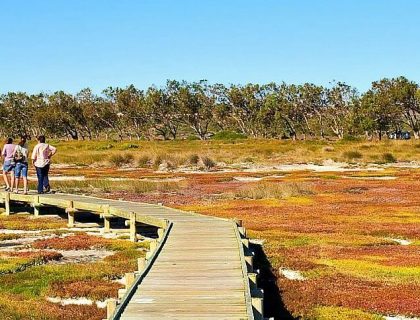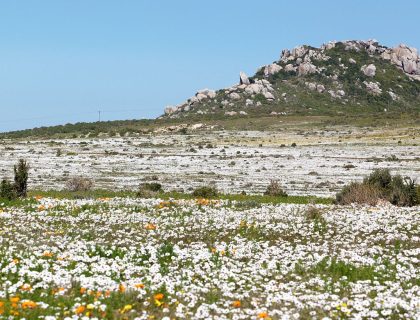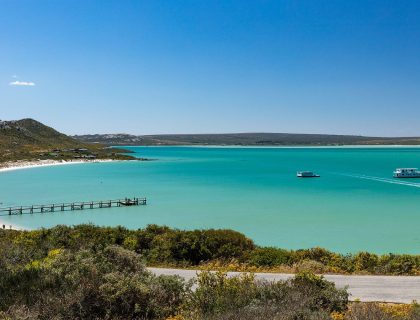West Coast National Park
Cape West Coast
The West Coast National Park
The West Coast National Park on the Cape West Coast is known for its birding throughout the year and for its wild flowers in springtime.
Thanks to the Benguela current, fish are in abundance along the West Coast. Rich nutrients attract vast shoals of fish, which in turn supports a superb birdlife. Indeed, the Cape West Coast has some of the best birding in the country, especially migratory birds. The West Coast National Park includes some important wetlands. These wetlands harbour some 25 million water birds including plovers, herons, ibis and black oyster-catchers. It is home to thousands of waders that migrate from Europe every summer. The offshore islands provide nesting sites for thousands of sea birds. Resident and migratory birds take advantage of the prolific shoals of fish to rear their chicks.
This National Park, on the southern edge of Langebaan Lagoon, has been set aside to protect the areas’ unique flora & fauna. It is one of the most important marsh areas in the world. The migrating waders throughout the world use a long chain of marshes to migrate. And this is the very last southern link.
What to see
A visit to Geelbek Goldfields Environmental Centre is a must. It is a mine of information on the flora, fauna and ecology of the region. There is a birdwatchers’ hide nearby. There’s also plenty of antelope as well, including eland, kudu and zebra.
Postberg Nature Reserve adjoining the West Coast Park is open only in August and September. At this time, flower-lovers will delight in the superb carpets of wild flowers. Expect many yellow gousblomme (gazanias) and white botterblomme (rain daisies).
Other nearby points of interest to combine with the West Coast National Park include the West Coast Fossil Park and the expanding village of Langebaan on the lagoon. And to the south is the fascinating Khwa ttu San Heritage Museum.










